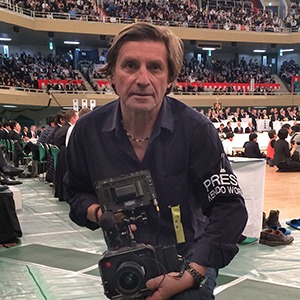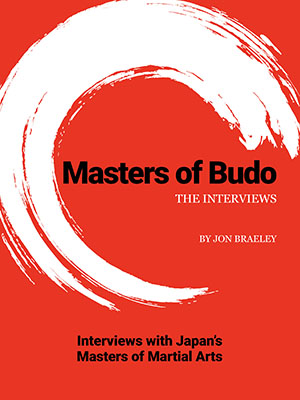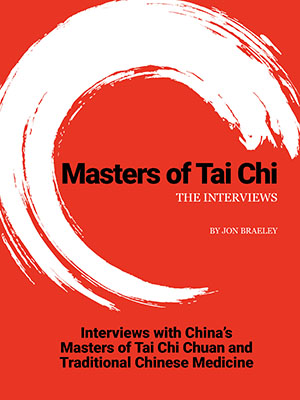Traditional karate dojo of Morio Higaonna sensei in Okinawa. Photo: Jon Braeley
The State of Traditional Martial Arts
First let us define what we mean by a traditional martial art. It is a fighting style that has been passed down from generation to generation and therby rooted in history and culture. A traditional martial art also places self development as an important aspect of training beside fighting skills. In Japan, classical martial arts schools can be traced back to the Warring States period (Sengoku) of the Samurai in the 15th century. These classical martial arts, known as koryu and kobudo were based on technique developed on the battlefield and established before the Meiji Restoration in 1868 (modern era). The martial art school of Tenshinshō-den Katori Shintō-ryū which was awarded “Intangible Cultural Asset” by Japan, was founded in 1447 and is still open today and is the source from which many Japanese martial arts have evolved. To define a traditional martial art of the modern period (after 1868) it must incorporate aspects of self development as part of its combat training. You can understand more on the traditions of martial arts in Japan through our book, Masters of Budo: The Interviews available on Amazon.

Katori Shinto Ryu martial art lineage goes to back to Samurai. Photo: Jon Braeley
Today we know these martial arts as “Budo” or the Way of Martial Arts, where combat technique and self-development are combined in order to promote both physical training and spiritual training as one. The classical schools of martial art such kenjutsu (sword technique) became kendo, while as an example, judo developed from jujutsu. Karate, which we will focus on later, is a relatively modern martial art, spreading across Japan just over 100 years ago. Nonetheless, we can use the term karate-do to reflect the self-development or spiritual aspect of karate. It is important to draw a line between a traditional martial art and a mixed martial art or Brazilian jujutsu – they have little in common with each other.
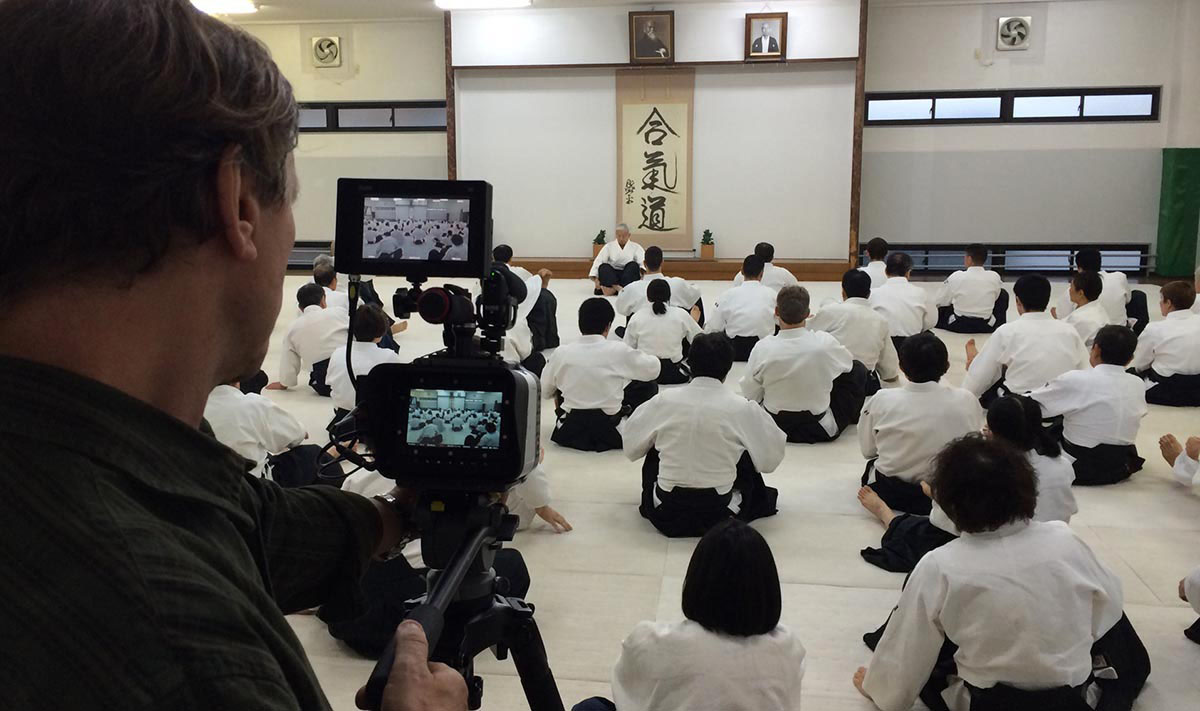
Jon Braeley filming Aikido master Moriteru Ueshiba at the Hombu Dojo
Let’s Start with Japan
It is true to say that traditional martial arts in Japan are experiencing a decline in popularity, although they are far from disappearing. Through budo, the Japanese have learned to cultivate their mind and body and inherit traditional values which the rest of the world admire. Indeed these are the values that made budo spread outside Japan so rapidly. However today, these values are under threat from the international community, with the rise of competitive sports and an excessive concern for winning at all costs.
In Japan the reasons for a decline in traditional martial arts cannot be attributed to the rise in sports competitions, but are multifaceted, with several key factors standing out:
Schools & Education:
Over two decades ago, there were patriotic efforts to make budo a compulsory subject in physical education in Japan due to declining interest among Japan’s youth. A first and second year junior high school student was expected to practice a martial art such judo and kendo. In fact over a century ago, the founder of judo, Jigorō Kanō, himself a school headmaster, designed judo to be a ‘safe’ combat sport so it could be added to school curriculums. Budo such as judo and karate are however being reviewed in the education system due to injuries, often attributed to over zealous instructors and little oversight by authorities. Despite efforts to add martial arts in schools, the younger generations are increasingly being drawn to western sports such as baseball and basketball and parents in Japan face an uphill battle to keep their children in martial art classes.

Tokyo high school girls practice the ancient martial art of Naginata. Photo: Jon Braeley
At college level my own experience was a little brighter. Kyudo or Japanese archery has gained a cult-like following at universities in Japan and I attended a number of kyudo classes where students are very conscious of the heritage of kyudo. Likewise kendo is still flourishing at university level, though equipment costs can be prohibitive. Karate, judo and aikido are however struggling to expand their student numbers in this age group. The International Budo University in Chiba, has seen attendance drop in recent years, especially among foreign students. This is worrying as this wonderful institution is an important entry point for the international community to learn Japanese martial arts culture through its Budo Specialization Program. I have visited the IBU many times over the last 25 years and my friends in Japan who graduated from here agree that foreign students are not as prolific in recent years.
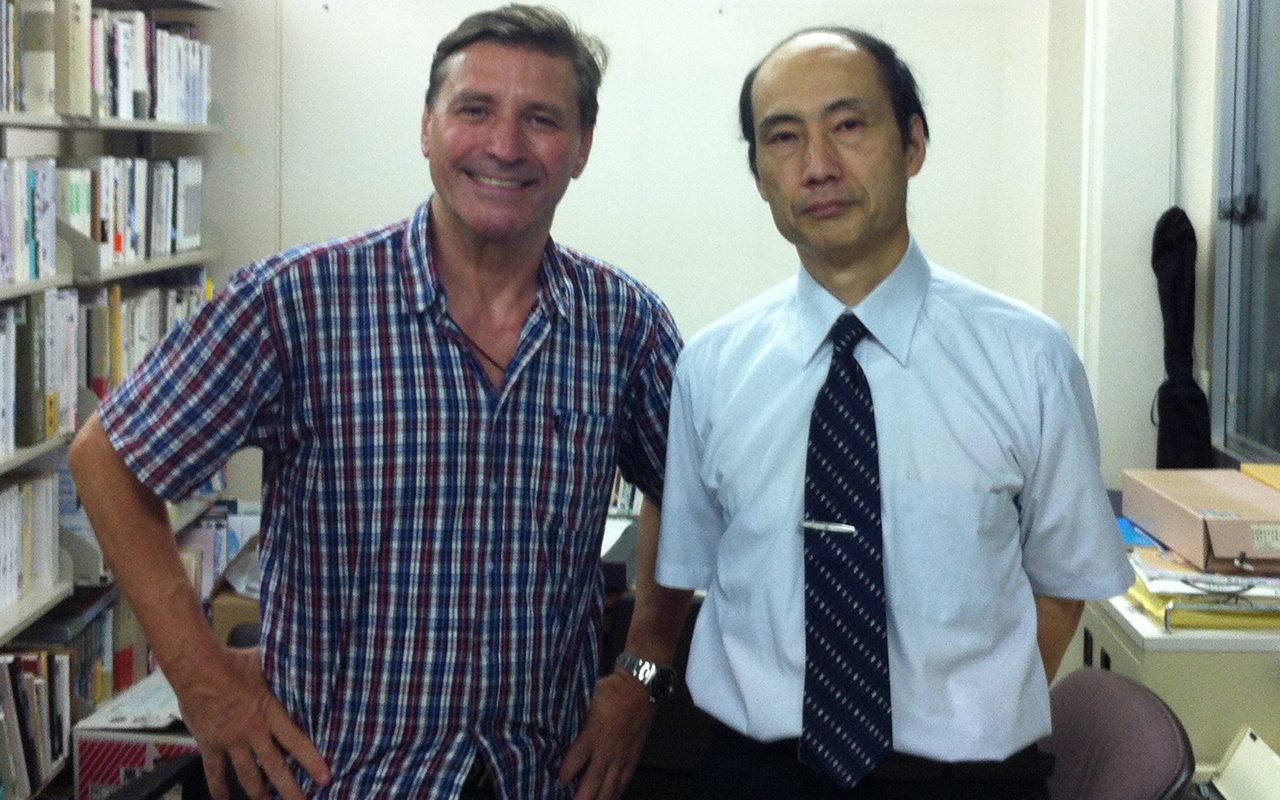
Jon Braeley with Professor Takashi Uozumi, International Budo University
Urbanization
As Japan’s population continues to move toward urban centers, the space and facilities (dojo) for traditional martial arts training (especially those that require large dojo or outdoor practice areas) can be hard to come by. Cities in Japan are required to make space available in community centers for martial arts but funding is getting increasingly difficult. During filming our kyudo (archery) movie, One Shot. One Life I discovered a kyudo dojo perched on the rooftop of a community center in Tokyo.
A Cultural Change
There’s been a general shift in how culture and traditions are viewed. While martial arts were once seen as vital for personal development and discipline, today, many people in Japan view them more as nostalgic activities or hobbies, rather than a necessary part of life. Additionally, the time commitment needed for rigorous training can be less appealing in a busy, modern world. Budo such as Jukendo and Tankendo which are forms of bayonet fighting have almost disappeared altogether. The popularity of the hit TV series ‘Shogun’ caught Japan by surprise and it is hoped this reinvigorates interest in traditional martial arts.
Internationalization of Martial Arts
Internationalization has been the buzzword in Japan since the 1950’s and was seen as a savior for the martial arts. But since then, the spread of traditional Japanese martial arts outside Japan has been a two-edged sword as they evolved in ways that are somewhat different from their traditional Japanese roots. Karate, Judo and to some extent Kendo, have been embraced for their Sport competition aspect which took Japan by surprise. Two notable examples are when Anton Geesink became the first non-Japanese to win Olympic gold in judo by defeating the Japanese favorite at the 1964 Tokyo Olympics and in the 1990 World Shotokan Karate finals when Great Britain beat the Japanese karate team. Japan had opened the door and now they were losing control of a prized cultural asset. Their hope is there are enough followers interested in the deeper aspects of martial arts beyond just the sport.

Morio Higaonna sensei is the embodiment of traditional karate. Photo: Jon Braeley
Karate in Japan
While karate faces challenges similar to those of other traditional martial arts, any decline is more visible outside of Japan. In Japan, traditional karate practice tends to focus more on traditional forms known as kata and self-discipline rather than on competitive fighting. This varies according to the different styles of karate. For example, Shotokan, one of the most popular styles in the world is modern in its approach and includes competitions or sport karate, whereas Goju-ryu karate with it’s roots in Okinawa is more traditional and does not promote sports style competitions. I asked the highest living Goju Ryu karate master in Okinawa, Morio Higaonna his thoughts on sports karate and he said, “Our waza (technique) taken from kata (he demonstrates a whip-like hand strike to the groin) cannot be used in sports competitions. Tournaments are a step for children on their way to achieving something higher.”
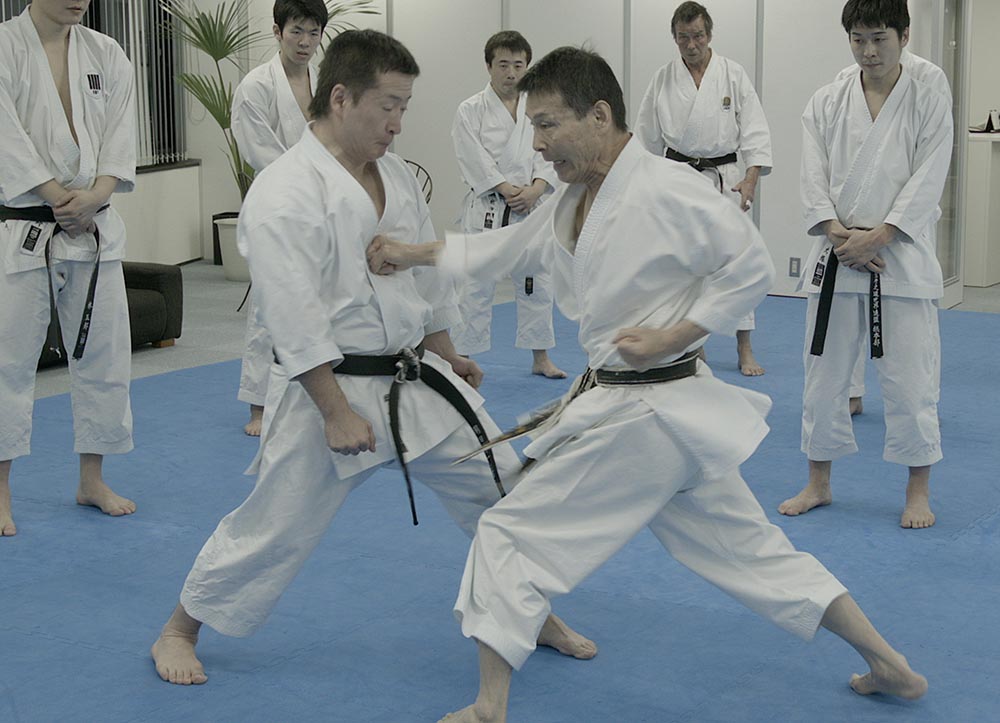
Mikio Yahara sensei says there are no rules in ‘budo karate’. Photo: Jon Braeley
In terms of decline in Japan, it’s still true that many younger Japanese people aren’t as interested in it compared to modern sports, but those who practice it often do so for the personal growth, discipline, and connection to tradition that karate provides. Plus, karate’s emphasis on respect, perseverance, and control makes it a valuable tool for character development, which many schools and dojos emphasize. Many years ago I was attending the JKS hombu dojo for a children’s class by Masao Kagawa, one of the finest karate masters in the world. I asked a parent why she brought her children to karate and she said, “We love our our two children too much and can never say no to them. Here, Kagawa sensei teaches them discipline and respect.”
Alternatively, we have the traditional karate of Mikio Yahara, s Shotokan master who tells us that karate is budo, for “defeating an opponent with “Ichi-geki-his-satsu”, meaning “certain kill in a single attack”. This philosophy puts his karate at odds with sports competitions which are governed by many rules to avoid serious injury.
What About the USA?
The state of traditional martial arts in the United States has some similarities to Japan but differs in one major way. America’s eagerness to turn martial arts into a business, especially karate which went through a very popular period in the 70’s and 80’s with celebrities like Bruce Lee and Chuck Norris in movies and television. Back then you would see a karate dojo on every shopping street, but since this heyday karate is no longer in the public eye, causing enrollment to decline. Many of the dojos that were once full of students have moved to smaller or less expensive locations in the suburbs or closed down. Here are some factors contributing to the decline in traditional karate in America.

Jon Braeley (right of center) attends black belt gradings of Hirokazu Kanazawa sensei
The Cost
The cost of running a traditional martial arts dojo is a major factor for much of the decline in the United States. Commercial rents have risen drastically in the least two decades and we are at the point where raising students subscriptions cannot cover the overheads of many dojos. There is also lack of support by community centers that can offer space at a subsidy which is very common in Japan, where public community centers exist solely for martial arts. In the U.S. you also have yoga, zumba and pilates all competing for less cheaper subsidized space.
Busy Lifestyles
Traditional martial arts training requires significant time and commitment. With busy work schedules, school, and the myriad of other modern distractions, many people find it harder to dedicate time to a martial arts regimen, which require 3 or 4 weekly classes to show signs of advancement. Just like other countries, kids and teens are drawn to other forms of entertainment, such as video games and sports like soccer or basketball.
Younger generations in the U.S. often don’t see martial arts as relevant or as culturally connected to their everyday lives. The philosophical elements such as discipline, respect, and personal growth that are so central to traditional martial arts can seem less appealing in a culture focused on convenience, instant gratification, and entertainment. Some people see traditional martial arts as somewhat “old-school” and less relevant in today’s world. There’s also a perception that MMA is cooler ( especially on social media) and this might overshadow traditional martial arts in terms of attracting younger practitioners.
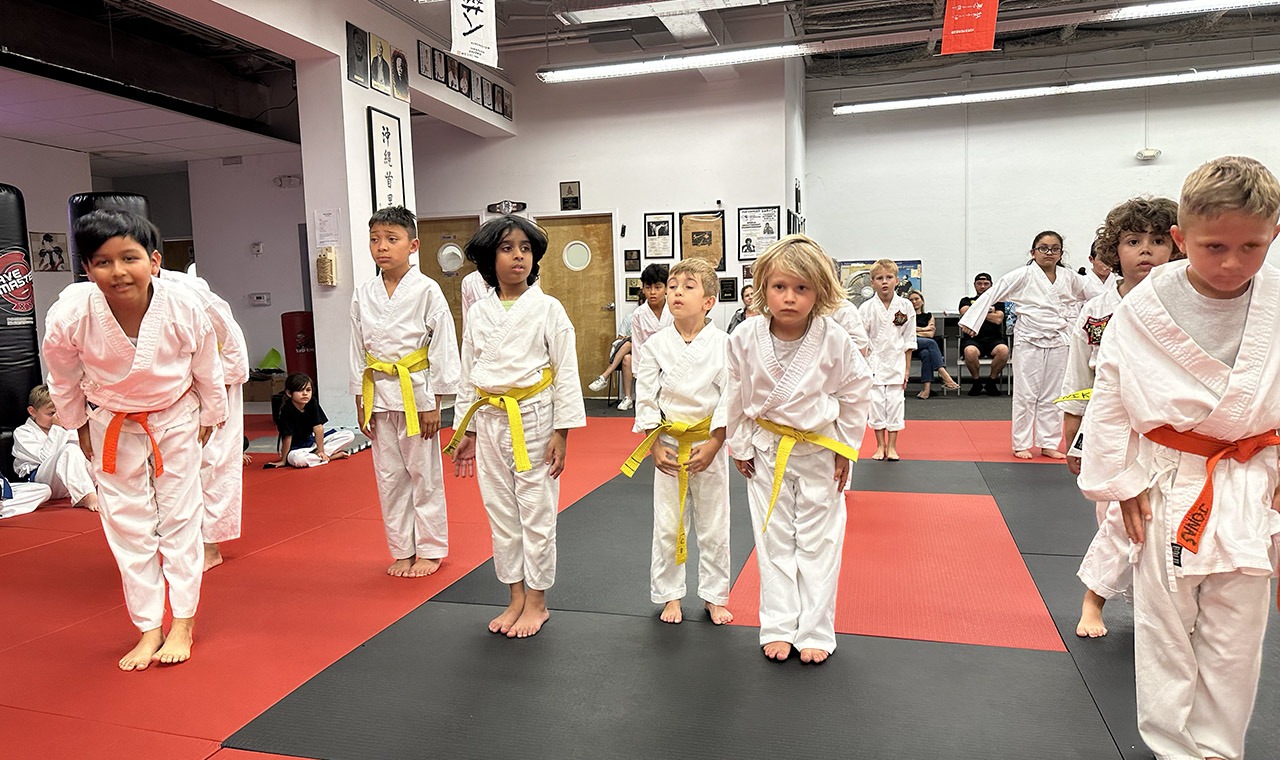
Children at our South Beach Karate learn self-defense and self-development
The Impact of MMA
MMA has become the dominant combat sport in the U.S., largely overshadowing traditional martial arts. Fighters from diverse backgrounds—karate, Brazilian jiu-jitsu, wrestling, and Muay Thai—are drawn into MMA, making it a more appealing and practical sport for many, especially with the rise of the UFC. The appeal of MMA is that it emphasizes a sport-focused approach and is less about the philosophical or cultural elements of martial arts.
Mixed martial arts and UFC have been quick to use social media to promote their style and their competitions. Likewise, Brazilian Jiu Jitsu are masters of social media to get their message across. On YouTube traditional martial arts are often trolled by those promoting full contact styles or styles that appear ‘more realistic in combat’, which is of course nonsense. Full contact martial arts (the foreunner of MMA) started in karate in Japan in the 1960’s with Kyokushin karate, and Japanese full contact martial arts tournaments existed long before America.
Politics and MMA?
Right-wing politics (and, more broadly, political ideologies) have had an influence on MMA, though the impact varies depending on the individuals and organizations. Some prominent MMA fighters have become outspoken about their political views. This has been more visible in the last few years, mainly due to UFC owner Dana White, who has steered the leading mixed martial art tournament to the far right, cashing in on the male dominence of far right-wing politics. It was no surpise to see the CEO of the UFC cozy up to Trump on election night where Dana White thanked a number of major influencers and podcasters, including Joe Rogan, all of which made the UFC the sporting arm of the Maga movement. With the deep pockets of Dana White and the UFC takeover of the media and culture wars in order to influence young people, we shall have to wait and see what effect this may have on traditional martial arts in America.
The spread of misogynistic views on social media is rampant, with influencer Andrew Tate, a former mixed martial arts fighter, at the forefront. Tate is a recent phenomenon and his threat to the health of young people is a major warning to parents. There are exceptions to this part of MMA culture such as UFC champion Jonathan Brookins, (see A Fighters Journey) who is a shining example of a self educated UFC fighter who follows his own middle path, not influenced by social media. At our own karate dojo we actively encourage girls to join and we give them a safe and pleasant atmosphere to practice – and it shows, with four out of ten students being female.

UFC Champion Jonathan Brookins (2010) visits the author in Miami
The Future of Traditional Karate
Yes, some traditional karate dojos in the U.S. have faced challenges in recent years, leading to a decline in numbers or even closures, but it’s not a universal trend. Our own karate dojo, South Beach Karate has moved locations twice in the last five years due to rising rents in Miami Beach, one of America’s most expensive cities. We will probably have to move again and this uncertainty does affect student numbers. Several factors can help to correct the decline including:
Get the News Out
Traditional karate has faced stiff competition with newer trends such as Brazilian Jiu-Jitsu (BJJ) or mixed martial arts (MMA), but this trend can be stopped. Brazilian Jiu-Jitsu is mainly a ground-based fighting style which does not appeal to everyone, especially females. Let’s be honest girls – do you want a guy dragging you to the ground and wrapping his legs around you until you submit? These styles are more usually found in a sports environment with rules. So it’s important to get the word out that traditional karate is a really great way to learn ‘real’ self defense for both men and women of all ages.

Jon Braeley and students at South Beach Karate Dojo
In the U.S. karate became a sport to many dojos and ancient forms (kata) and deadly technique gave way to a safer competition style called point karate or point fighting (yes, for points) which is often derided by MMA followers. I think we need to get back to our Japanese roots in order to compete with MMA and BJJ. Traditional karate has no rules (not to be confused with sport karate) and lethal strikes, kicks and joint-locks which are prohibited in MMA sports are practiced in karate as well as eye-gouging and attacking vulnerable pressure points. Of course these more lethal technique must be taught with care but nonetheless, if one’s life is threatened, karate with no rules or limits is an obvious choice for self defense. Plus on the flip side to this, traditional karate instructors can make the public aware that traditional karate is not only about self defense but self improvement… not just in fighting ability but building discipline, self confidence and respect for others. Traditional karate is founded on legendary Japanese masters who have passed their knowledge down from generation to generation over the last century or more. A traditional karate dojo should align itself with a karate or budo federation that reinforces this proud lineage.
A Resurgence?
Despite the challenges, many karate dojos are still thriving. There’s a strong community of practitioners in North America, United Kingdom and Europe that cherish the cultural and philosophical aspects of traditional karate, which emphasize discipline, respect, and personal growth. Parents have a wide choice when they wish to add after school activities to their childrens education. Learning a martial art like karate that is based on self-development has a track record that is unequaled and we must get the news out. So, while some dojos may be struggling, there are still vibrant communities and schools of karate in the U.S. that if they maintain their focus on traditional practice, they will be successful.




